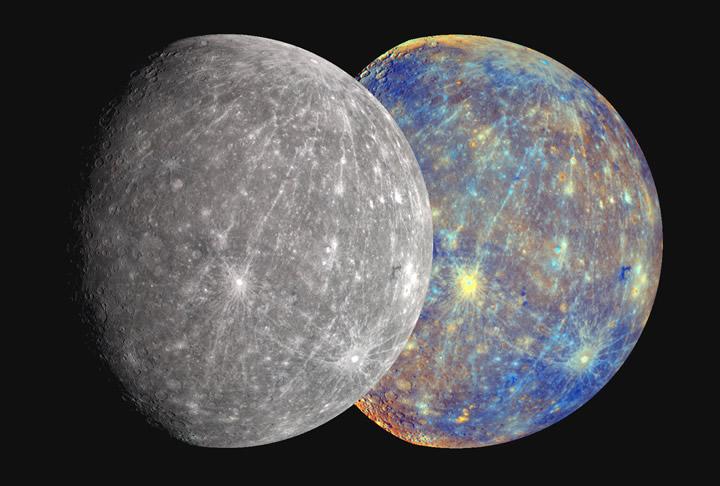
Mercury in Color!
NASA’s MESSENGER (MErcury Surface, Space ENvironment, GEochemistry, and Ranging) spacecraft captured the image at left, an approximation of Mercury’s true color as might be seen by the human eye, on Oct. 6, 2008. MESSENGER’s camera suite, the Mercury Dual Imaging System (MDIS), had 11 narrow-band spectral filters covering visible and near-infrared wavelengths (400 to 1050 nanometers). The specific colors of the filters were selected to discriminate among common minerals. The true-color view combined three color images (480 nm, 560 nm, 630 nm), showing that color differences on the surface are slight. The exaggerated color view at right uses all 11 filters in the visible and near-infrared, to highlight subtle color differences and aid geologists in mapping regions of different composition. The nature of color boundaries, color trends, and brightness values help MESSENGER geologists understand the discrete regions (or “units”) on the surface.
- X




























